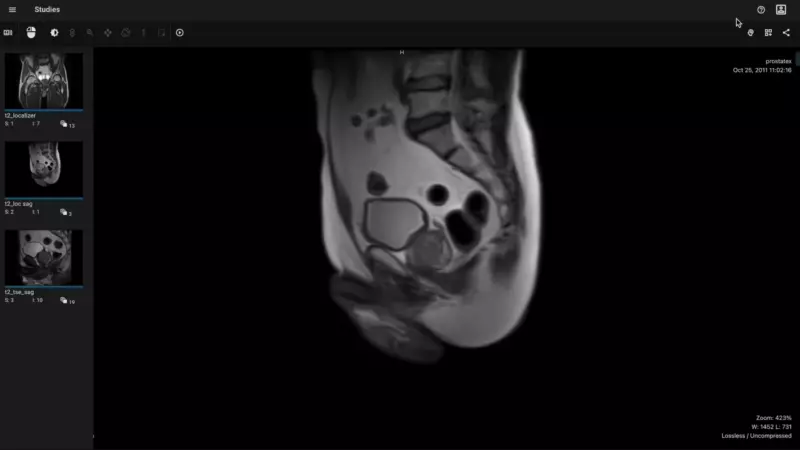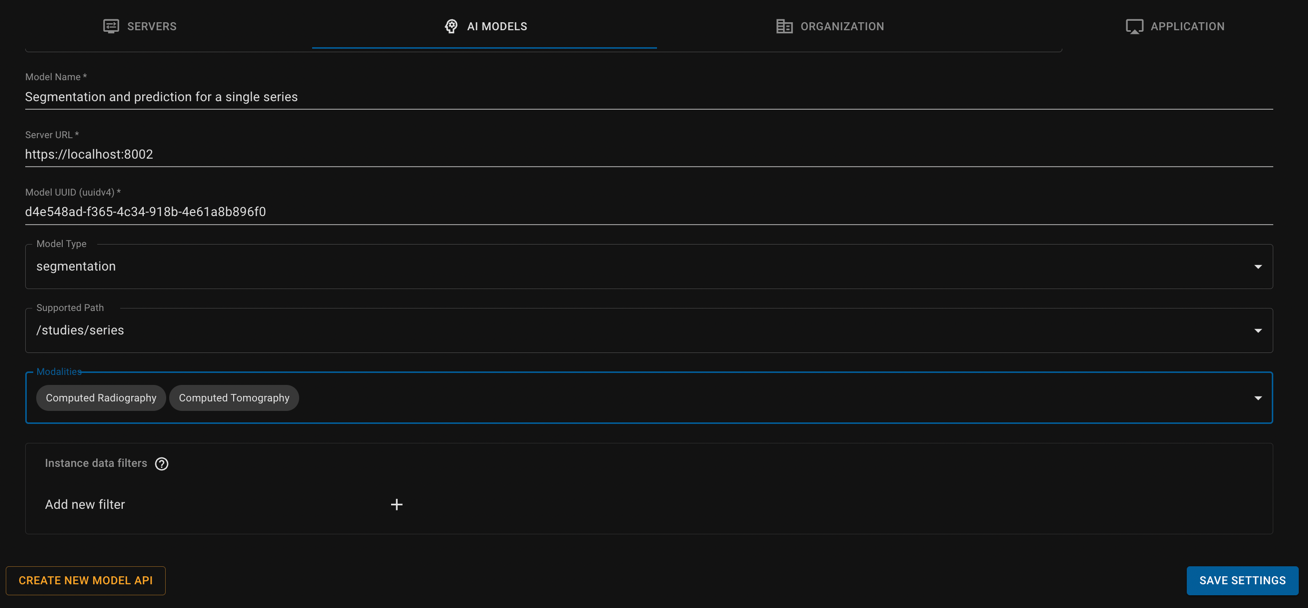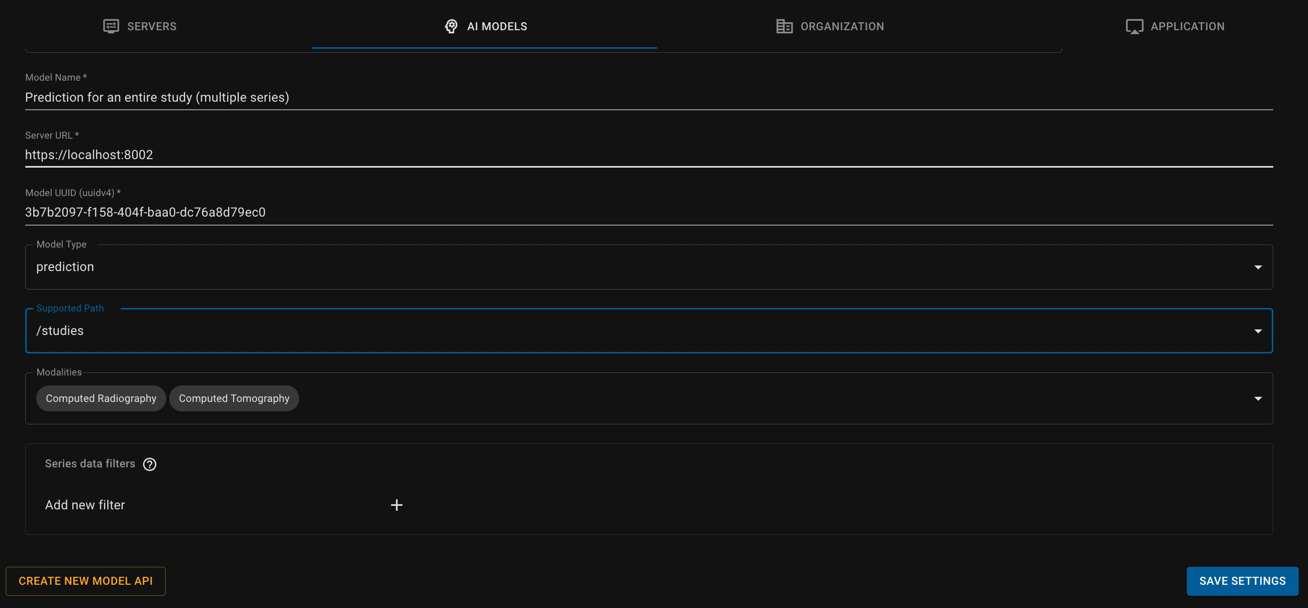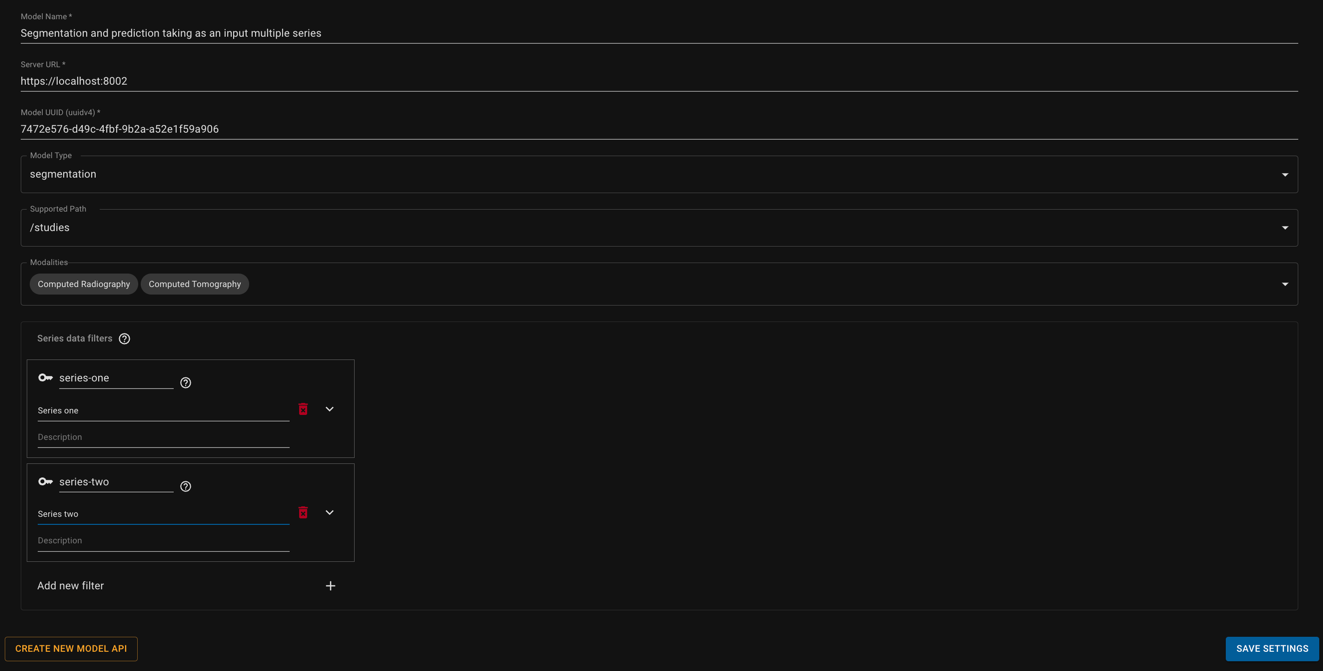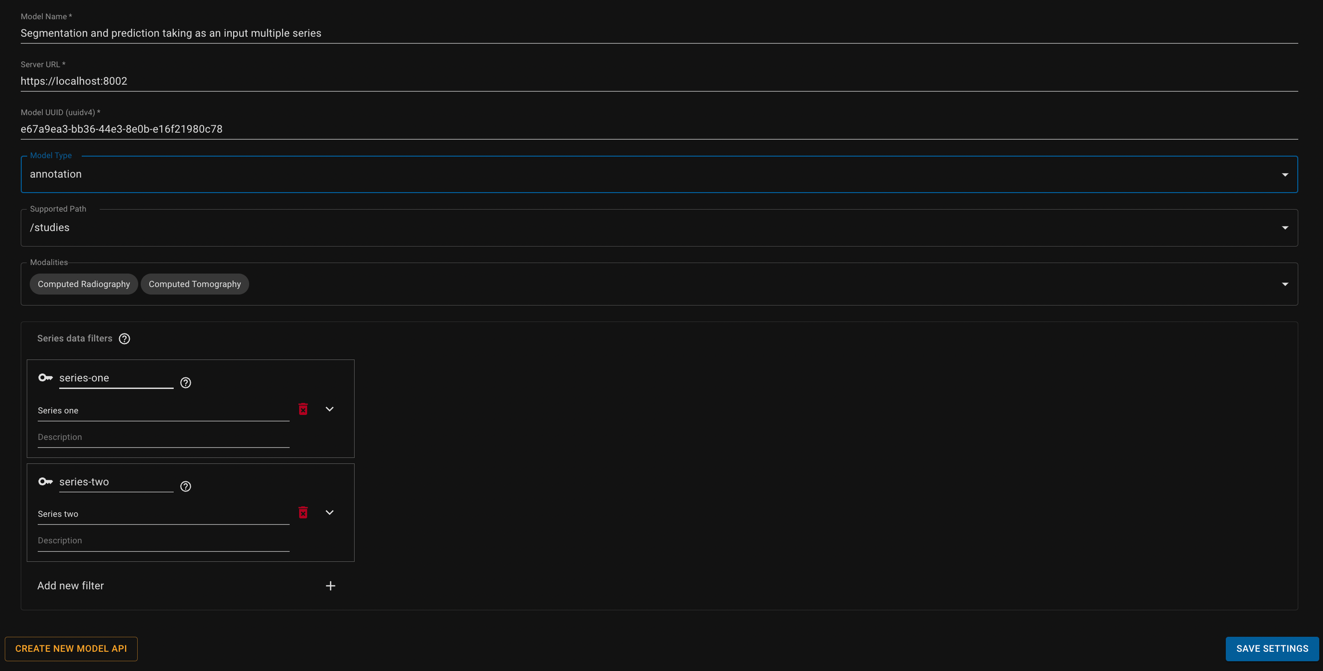Example-Model-API
In this repository we show how to design an API with an AI model and how to make it connected with the viewer. We return dummy annotations that should be taken as a starting point to plug in your own valid AI models and integrate seamlessly with the zhiva viewer.
We show some example model prediction types such as:
- segmentation and prediction for a single series
- prediction for an entire study (multiple series)
- segmentation and prediction taking as an input multiple series
- annotation and prediction taking as an input multiple series
We provide a separate endpoint for each approach. From there, you can easily start deploying the model. To learn more about the API structure, see documentation
Each endpoint must be configured in the models.json file in model-proxy and added manually to the viewer. To learn more see the Model Configuration section of this Readme.
How to run the API
docker-compose up
API avalible at:
0.0.0.0:8011
Model configuration
Follow the official tutorial. You need to configure a proxy server that will route requests from the viewer to the model API.
You will need to add each endpoint to models.json config file in model-proxy
Below is the configuration for both the viewer and the model-proxy. We assume that the API runs on localhost:8011
and is available on the same network as the model-proxy. This is the case if you follow the official documentation.
Segmentation and prediction for a single series
{
"d4e548ad-f365-4c34-918b-4e61a8b896f0": {
"uri": "http://localhost:8011/single-series-endpoint",
"supports": ["/studies/series"],
"task": "segmentation"
}
}Prediction for an entire study (multiple series)
{
"3b7b2097-f158-404f-baa0-dc76a8d79ec0": {
"uri": "http://localhost:8011/whole-study-endpoint",
"task": "prediction",
"supports": [
"/studies"
]
}
}Segmentation and prediction taking as an input multiple series
{
"7472e576-d49c-4fbf-9b2a-a52e1f59a906": {
"uri": "http://localhost:8011/multiple-series-endpoint",
"task": "segmentation",
"supports": [
"/studies"
],
"dataFilter": [
{
"dataKey": "series-one",
"title": "Series one"
},
{
"dataKey": "series-two",
"title": "Series two"
}
]
}
}Annotation and prediction taking as an input multiple series
{
"e67a9ea3-bb36-44e3-8e0b-e16f21980c78": {
"uri": "http://localhost:8011/multiple-series-annotation-endpoint",
"task": "annotation",
"supports": [
"/studies"
],
"dataFilter": [
{
"dataKey": "series-one",
"title": "Series one"
},
{
"dataKey": "series-two",
"title": "Series two"
}
]
}
}FAQ
- I'm getting an error on MacBook
docker rpc error code = unknown desc = executor failed running [...].
Your docker settings are limiting the size of the image and cannot install all the requirements.txt. Go to Preferences > Resources > Advanced in your Docker Desktop application and increase the memory limit.
